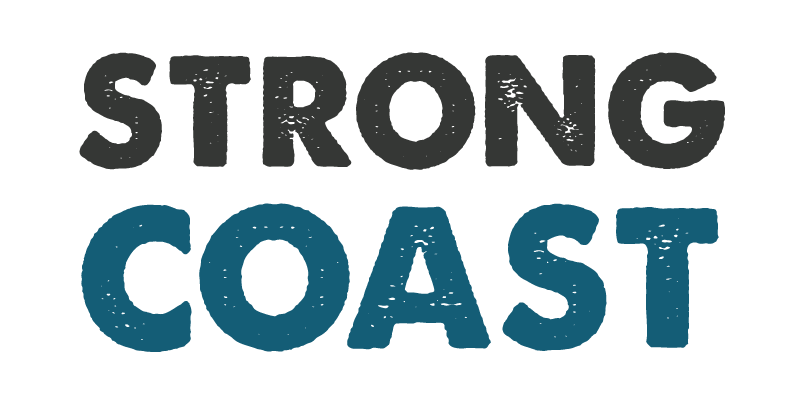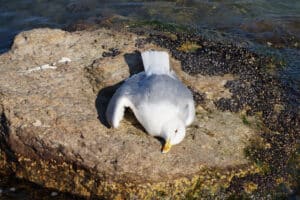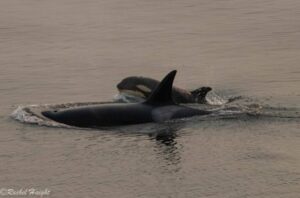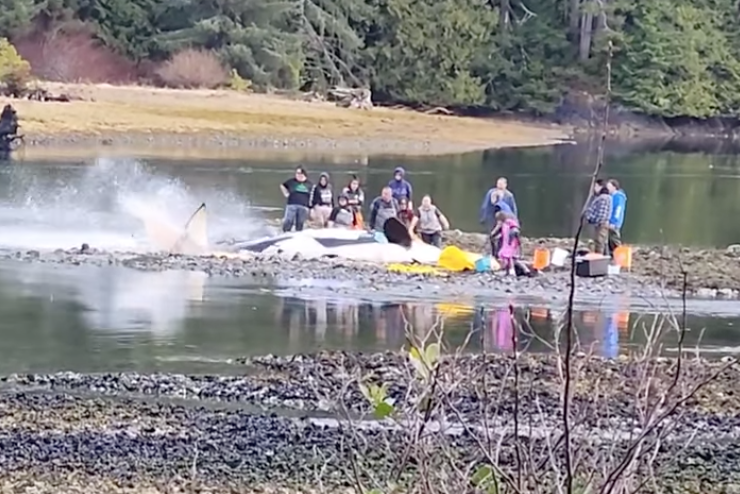
An orca, apparently a mother, died early Saturday after becoming stranded on the Zeballos Causeway, as dozens of people tried to save her.
“It had a seal in its mouth; it was hunting for food. The seal went on to the beach, and the orca followed and got stuck.”
Haily John-Hansen
The whale squirmed on her side and flapped her tail, trying to right herself, while people tried to shift her from her side onto her belly before the tide came.
A young orca–possibly her calf–swam nearby, watching.
“They couldn’t get her onto her belly quick enough, and the orca had water going into its mouth, and through the blowhole, which resulted in the orca drowning,” said Haily John-Hansen, one of the local residents who turned out to help.
“It was actually trying to help them help it flip onto its stomach.”
“It had a seal in its mouth; it was hunting for food. The seal went on to the beach, and the orca followed and got stuck.”
The causeway is near the village of Zeballos and adjacent Ehattesaht/Chinehkint First Nation, on the northwest coast of Vancouver Island.
Howard Garrett, president of the Orca Network, said the orca was likely a Biggs killer whale. This species is part of the population of transient orcas off the west coast of Vancouver Island, and it hunts seals and other mammals close to shore.
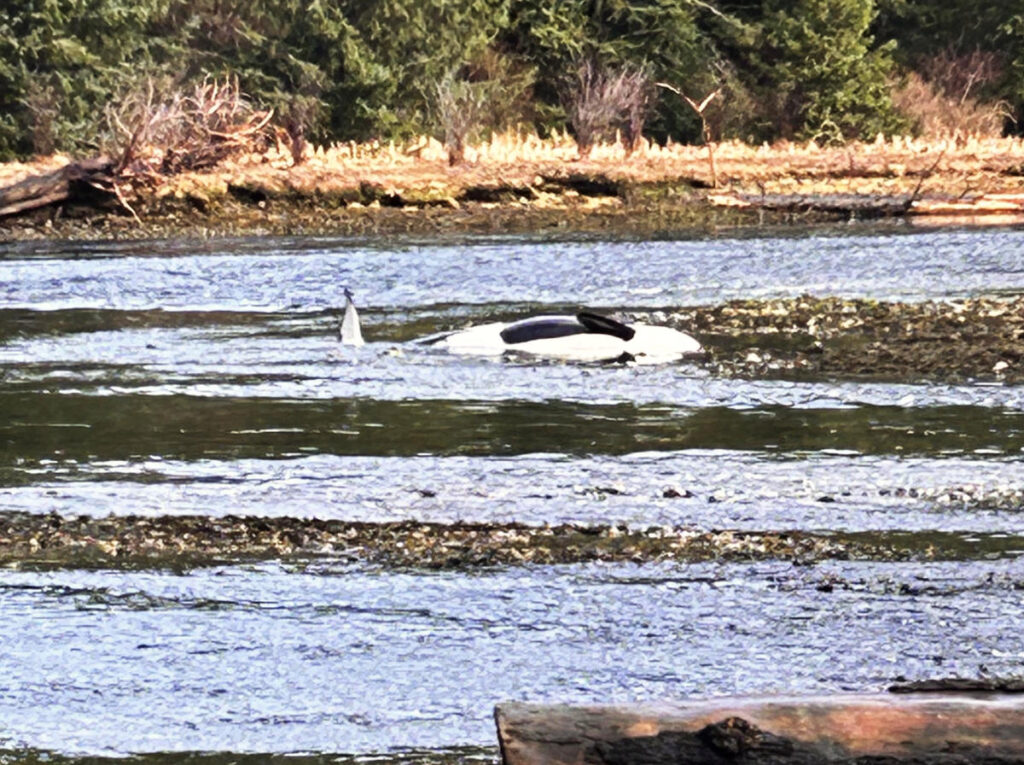
“It could happen in pursuit of seals, a miscalculation of getting stuck on rocks, but that’s really rare,” Garrett told The Skeena.
Unlike the endangered population of salmon-eating Southern Resident orcas, of which only a few dozen remain, transients are thriving and increasing by about 4% each year, said Garrett.
The animals are protected, and the waters off Western Vancouver Island provide a rich hunting ground for them, he said. “There are more seals per square meter there than anywhere else.”
As the whale and her helpers struggled, Zeballos residents shared videos on social media.
“Traditionally, we are connected with them, which is why so many of us jumped to go try to help the orca.”
Haily John-Hansen
Marine Education and Research Society monitored the feeds and commented, “This area is known to us. It is highly influenced by changes in tides. The whales would have come in on a high tide (possibly hunting). When the tide ebbs in this particular spot, it happens very quickly.”
“There may have been something wrong with the mother’s health condition whereby she was more subject to stranding on the lower tide. A necropsy could possibly provide insight.”
The society said whether the nearby calf survives “will depend on their age (independence) and the family structure of these whales. Not all Bigg’s organize in matrilines whereby there might be family members nearby.”
John-Hansen said she and other residents of Ehattesaht shared news of the whale early in the morning and immediately rushed to try to save her. “We went right away. When we got there, we saw about a dozen vehicles on the side of the road. Then we saw the orca lying on its back on the beach. And the calf was swimming around. We think it was waiting for its mother.”
“Traditionally, we are connected with them, which is why so many of us jumped to go try to help the orca,” she said.
Published with the permission of The Skeena.
